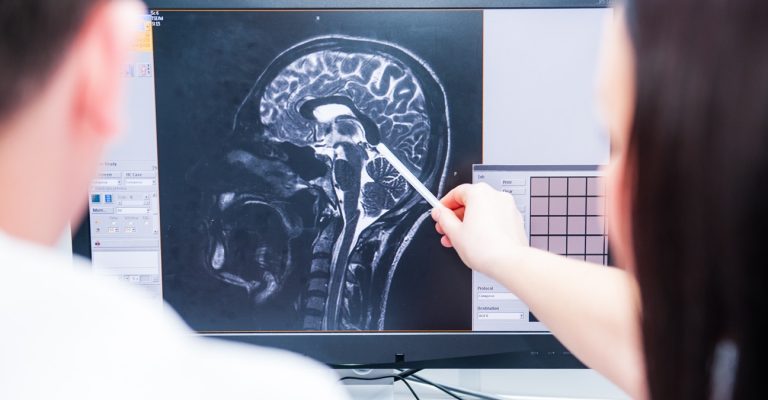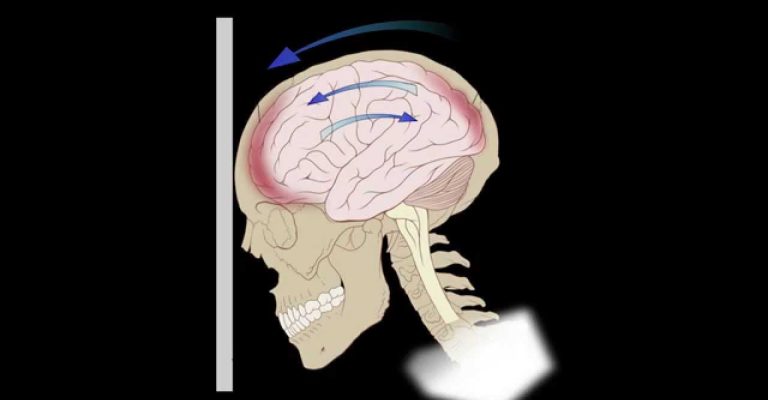
Coup and contrecoup (pronounced “coo” and “contra coo”) relate to a form of head injury (traumatic brain injury) and the location of the injury relative to the point of impact. A coup injury occurs right beneath the spot of impact on the brain. A contrecoup injury occurs on the opposite side of the brain from where the impact occurred. Coup and contrecoup injuries are types of traumatic brain injuries that cause bruising of the brain.
The majority of brain injuries are caused by an external force, which means that something comes into contact with the head.
When a hit to the head causes damage to the brain, a person is said to have had a coup-contrecoup injury. These kinds of accidents may often cause damage to both sides of the brain at the same time. In order for this to take place, the head must sustain significant blunt-force trauma, which can only be caused by coming into contact with a large object.
A coup injury is defined as brain damage that occurs right underneath the site of impact. In contrast, a contrecoup injury occurs on the other side of the brain from where the head is hit.
These injuries may occur individually (as a coup injury or a contrecoup injury), but if the blow is forceful enough, they generally show simultaneously (as a coup-contrecoup injury).
The brain is enclosed inside the skull and floats in cerebrospinal fluid. In general, this offers enough protection from the bumps and jolts we encounter during the day. However, if a hit to the head is powerful enough, the brain might bang against the skull, causing catastrophic injury.
Most coup-contrecoup injuries occur when a person’s head collides with a stationary object. For example, if a vehicle strikes you from behind, you may suffer whiplash and smack your head on the steering wheel.
When the skull collides with an item, the brain goes toward the object until it collides with the skull. Then, as a result of the effect of the original trauma, it bounces, generating a second blow to the brain by striking the other side of the skull.
Coup-contrecoup injury is considered focused brain injuries because they are limited to certain parts of the brain. In the next part, we’ll go through the numerous indications and symptoms that may occur after a coup-contrecoup brain injury

A coup injury happens when the brain strikes the skull at a single point. A contrecoup injury, on the other hand, happens when the brain strikes the opposite side of the skull from where the original impact occurred. As a consequence, you may acquire a contusion or bruise at the point of contact.
A coup-contrecoup injury happens when you sustain a coup and a contrecoup injury at the same time. The brain collides with the skull at the impact site and on the opposite side, causing significant damage and bruising.
These injuries are often sustained in situations involving significant levels of force, such as high-speed motor vehicle crashes.
We’ll go through typical indications and symptoms of injury to each of these brain areas below.
The frontal lobe is the greatest part of the cerebral cortex. It is largely in charge of higher cognitive functions such as attention, planning, memory, and behavior.
Furthermore, injury to the frontal lobe may affect motor control. As a consequence, patients may feel weakening or paralysis of voluntary muscular movements.
The parietal lobe is placed behind the frontal lobe. This area of the brain is in charge of sensory processing information such as touch and proprioception (your sense of where your body is in space).
When a coup-contrecoup injury affects the parietal lobe, it can cause problems with sensation and perception. As a result, people may struggle to interact with their surroundings.
The occipital lobe is located behind the parietal lobe and toward the back of the brain. This part of the brain is primarily responsible for processing visual stimuli.
A coup-contrecoup injury to the occipital lobe can cause various types of blindness and visual distortions.
The temporal lobe is located in the lower middle part of the brain, next to the temples and above the ears. Its primary function is to process auditory information, but it also aids in the interpretation of smell and sight.
A coup-contrecoup injury TBI can have long-term consequences depending on the severity and location of the injury. In severe cases, you may experience coma, brain death, or be permanently vegetative.
Physical complications such as seizures, hydrocephalus, infections, and persistent headaches are also possible.
Many coup-contrecoup victims also experience cognitive changes, such as memory and learning issues, communication problems, and difficulty performing executive functions such as problem-solving, multitasking, or decision-making.

Treatment of coup-contrecoup injuries mostly relies on the severity of the damage and which parts of the brain are affected.
Every coup-contrecoup brain injury is unique. Thus a tailored approach to therapy that addresses each individual’s distinct secondary consequences is optimal.
Frequently recommended rehabilitative therapies include:
If motor control is impaired following a coup-contrecoup injury, physical therapy will assist restore mobility via focused exercises.
Occupational therapy can assist persons in recovering as functionally and independently as possible after coup-contrecoup injury by teaching new methods to do routine tasks.
If your coup-contrecoup injury results in aphasia, you may lose your capacity to communicate. A speech therapist can assist educate you on how to restore language abilities. They may also aid with relearning swallowing skills if required.
Cognitive training may assist enhance memory, concentration, problem-solving, and learning abilities after a coup-contrecoup injury.
Coup-contrecoup brain injuries affect both the location of impact and the opposite side of the brain. Because two areas of the brain are impacted, persons with coup-contrecoup injuries may have a wide variety of subsequent symptoms.
Treatment will vary depending on whatever parts of the brain are impacted and their subsequent repercussions.
We hope this article helps you understand the ramifications of a coup-contrecoup brain injury as well as the best strategies for recovering from one.